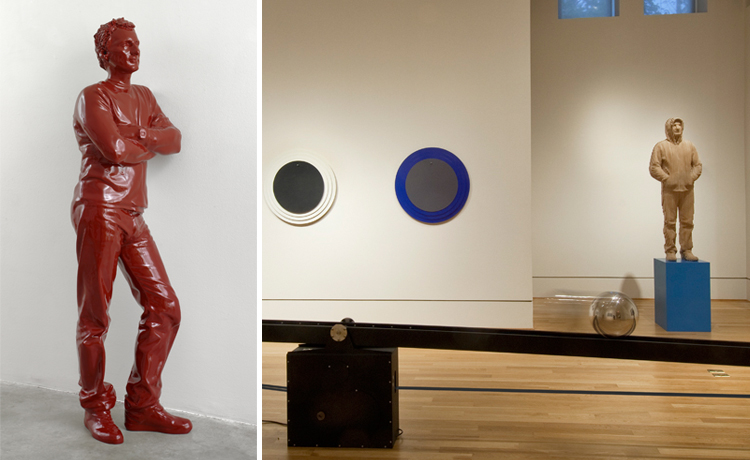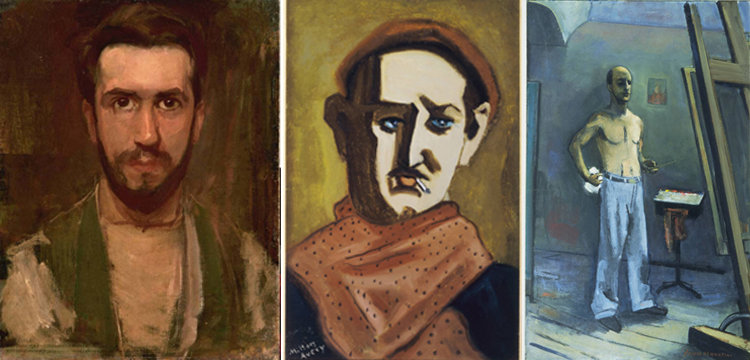
(Left) Xavier Veilhan, Xavier, 2006. Polyurethane, epoxy paint, 59 3/4 x 20 1/2 x 18 in. Private Collection, New York © 2012 Veilhan / ADAGP, Paris, and ARS, New York Courtesy Gallerie Perrotin. Photo: André Morin (Right) Installation view of (IN)balance. Photo: Lee Stalsworth
If you haven’t been in person to see Xavier Veilhan’s sculptural self-portraits in his exhibition at the Phillips, (IN)balance, you’re in for a surprise. What you can’t tell from these image is that the statues are just shy of life-size. Measuring about 5 feet tall, these statues seem to be exact replicas of the artist—just tinier. This (no pun intended) small but significant detail begs the question: what is the purpose of a self-portrait? Is it to record a moment in time, to challenge oneself to make the truest likeness possible, to make an inward-looking statement, or all of the above?
Veilhan answered this question in part during a recent interview with Express‘s Mark Jenkins, stating “for me, they’re not really self-portraits. There is no attempt to show something psychologically about myself.” But what about the artists who do intend these likenesses to reveal something about themselves?
I looked to our own collection to investigate the relationship between artist and self-portrait, and found that I had a lot to work with. We have a stoic Paul Cézanne, a somber Käthe Kollwitz, a dark Edvard Munch—the list goes on. Among diverse styles, I found a consistent message: this is who I am as an artist, inside and out. In contrast to the free experimentation you might find in other works by these same artists, self-portraits tend to have calculated details. Cézanne’s facial features are constructed with his signature block-like brush strokes, Milton Avery strives to exemplify the bohemian artist (note the dangling cigarette, beret, and all), and Augustus Vincent Tack actually uses one of his own paintings as a backdrop.
My personal favorite self-portrait in The Phillips Collection is the one by Piet Mondrian. After a lifetime of associating this artist with stark, geometric grids, the fluid and painterly style he uses here came as a shock.
Amy Wike, Publicity and Marketing Coordinator

(Left) Piet Mondrian, Self-Portrait, c. 1900. Oil on canvas, 20 x 15 1/2 in. Acquired 1958. The Phillips Collection, Washington, D.C. (Middle) Milton Avery, Self-Portrait with Red Tam and Scarf, 1938. Oil on canvas, 22 in x 14 in. Gift of Louis and Annette Kaufman Trust, 2008. The Phillips Collection, Washington, D.C. (Right) Joseph De Martini, Self-Portrait, c. 1943. Oil on canvas, 48 7/8 x 30 1/4 in. Acquired 1943. The Phillips Collection, Washington, D.C.

Have you read Eric Kandel’s “The Age of Insight: The Quest to Understand the Unconscious in Art, Mind, and Brain”? He has some interesting insights into self-portraiture, particularly as concern Egon Schiele.
I have not, but will have to pick up a copy, especially because I’m a big Egon Schiele fan!